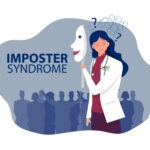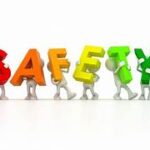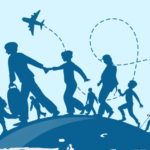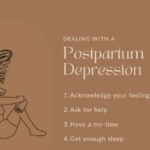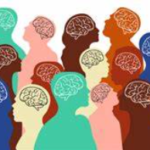In Nigeria, autism remains a misunderstood and often under-discussed condition, with many families facing daily challenges in raising children or caring for adults with autism. Among the spectrum of autism-related needs, the safety of non-verbal individuals stands out as a critical concern. These individuals, unable to communicate their needs or distress, are particularly vulnerable to physical, emotional, and even social harm.
In this article, we will explore the importance of comprehensive safety measures that cover physical, communication, community, and emotional-behavioral safety for non-verbal individuals with autism in Nigeria.
Understanding and implementing these safety measures can drastically reduce the risks of abuse and improve quality of life for both individuals with autism and their families.
The Unique Needs of Non-Verbal Individuals with Autism
Before diving into specific safety concerns, it’s important to recognize the unique nature of non-verbal autism. People with autism exhibit a wide range of behaviors and abilities, but non-verbal individuals face particular challenges.
They cannot use speech to communicate their wants, needs, or emotions, which increases the likelihood of frustration, distress, and misunderstanding.
As stated in a publication by Davis (2005) , “When we support non-verbal individuals with Autism Spectrum Disorders (ASD), we quickly become aware that it is important to read body language, facial expression, sounds, or other behaviors”
For example, non-verbal children may struggle to convey when they are in pain or when something around them is making them uncomfortable. This inability to communicate increases their risk of physical harm, neglect, and emotional stress.
According to the World Health Organization (2023) , an estimated 1 in 100 children worldwide has an autism spectrum disorder, with awareness and diagnosis rates rising steadily in Nigeria.
However, despite this increase, the resources available to support these individuals—especially those who are non-verbal—remain limited, leaving many families to navigate this challenging journey with little support. It is therefore vital to develop and implement strategies that ensure the safety of non-verbal individuals with autism in physical, social, and emotional contexts.
Physical Safety: Minimizing Environmental Risks
One of the most immediate concerns for families of non-verbal individuals with autism is physical safety. Non-verbal children and adults may not be able to alert a caregiver if they are in danger, are hurt, or need assistance. This makes it essential to safeguard both home and community environments.
At home, you should childproof all spaces where potential dangers could occur. This includes securing sharp objects, outlets, and heavy furniture that could tip over. In addition, creating a safe, enclosed outdoor space where your child can play without risk of wandering off or being exposed to road traffic is highly recommended.
Many non-verbal children, due to their sensory processing issues, may wander off when overstimulated or confused, which puts them at risk of abduction, injury, or traffic accidents.
In public spaces, you should always be vigilant. Non-verbal individuals may not understand the need to stay close or communicate their needs. As a caregiver or family member, this means being proactive in anticipating risks, setting boundaries, and ensuring that environments are sensory-friendly to prevent overstimulation or harm. Local initiatives such as autism-friendly public spaces or schools can offer an added layer of protection.
Communication Safety: Facilitating Understanding and Connection
Communication is another critical area of concern for non-verbal individuals with autism. Without the ability to verbally express their needs or emotions, these individuals may experience frustration that can lead to behavioral outbursts or self-harm. Therefore, it is vital to provide alternative ways for them to communicate.
One effective strategy is the use of augmentative and alternative communication (AAC) methods. AAC includes a variety of communication tools, such as picture exchange communication systems (PECS), communication boards, and speech-generating devices, which can empower non-verbal individuals to express themselves. For example, research from various sources, including a study by Jurgensa et, al (2019) stated that using PECS significantly improved communication of basic needs and reduced aggressive behaviors in children with autism.
Additionally, technology has opened up new possibilities. Apps and devices that allow non-verbal individuals to select images or text to communicate with others can greatly enhance their safety. The more equipped a non-verbal person is to communicate, the less vulnerable they are to frustration, misunderstandings, and emotional distress.
Training for caregivers is also essential in ensuring that they understand and can utilize these communication methods effectively. Knowing the signs of distress or discomfort, even without words, can significantly increase a non-verbal individual’s sense of safety and comfort.
Community Safety: Reducing Social Risks
For many non-verbal individuals with autism, the community can be a source of both support and risk. The stigma surrounding autism in Nigeria can lead to exclusion and discrimination, which affects both the safety and well-being of these individuals.
Inadequate understanding of autism in local communities may also result in individuals with autism being misunderstood, neglected, or even mistreated. You can help bridge this gap by becoming an advocate for autism awareness within your community.
Public education campaigns, aimed at raising awareness of autism and teaching people how to interact with those on the spectrum, can go a long way in reducing negative social interactions. This can include teaching neighbors, teachers, and local businesses how to recognize and respond to behaviors commonly associated with autism, like sensory overload or repetitive movements.
Emotional and Behavioral Safety: Managing Triggers and Stressors
Emotional and behavioral safety is another crucial aspect to consider. Non-verbal individuals with autism often experience heightened levels of anxiety, especially when they are in unfamiliar environments or facing overwhelming stimuli.
This can lead to aggressive behaviors, self-injury, or other challenging behaviors that make them more vulnerable to mistreatment or neglect.
To manage these challenges, caregivers should work closely with therapists to develop individualized plans that help identify emotional triggers and coping strategies. Behavioral therapy, speech therapy, and occupational therapy have been proven to reduce anxiety and increase emotional regulation in individuals with autism.
Addressing the Risk of Abuse: A Critical Concern
One of the most alarming risks faced by non-verbal individuals with autism is abuse. Without the ability to communicate, these individuals are at a higher risk of physical, emotional, and sexual abuse. Tragically, this issue is often overlooked in Nigeria, where autism awareness is still developing.
Preventing abuse requires a multi-pronged approach. Families, caregivers, and institutions must be thoroughly trained to recognize signs of abuse and be aware of the best practices for reporting and protecting individuals with autism.
Nigeria’s Child Rights Act and the National Policy on Disability can provide a foundation for protective measures, but it is also crucial for advocacy groups to push for more stringent enforcement of laws designed to protect vulnerable individuals.
Conclusion: A Call for Collective Action
Creating a safer environment for non-verbal individuals with autism in Nigeria requires the collective effort of families, healthcare providers, educators, and society at large. By implementing comprehensive safety measures that address physical, communication, emotional, and community safety, we can significantly reduce the risks faced by this vulnerable population.
Nigeria needs to increase autism awareness, expand resources, and foster inclusive practices so that individuals with autism can live in environments that are safe, nurturing, and supportive. Together, we can build a safer, more inclusive Nigeria for individuals with autism.
References .
Davis, K. (2005). “If they could only tell me what they are thinking.” The need for augmentatative communication for individuals with autism spectrum disorders. The Reporter, 10(1), 4-6, 16.
Jurgensa, Anneke, Andersona, Angelika & Moore, Dennis. (2009). The Effect of Teaching PECS to a Child With Autism on Verbal Behaviour, Play, and Social Functioning. Behaviour Change. 26. 66-81. 10.1375/bech.26.1.66.
World Health Organization.(2023). Autism. Available from : https://www.who.int/news-room/fact-sheets/detail/autism-spectrum-disorders.


